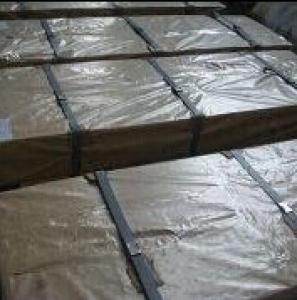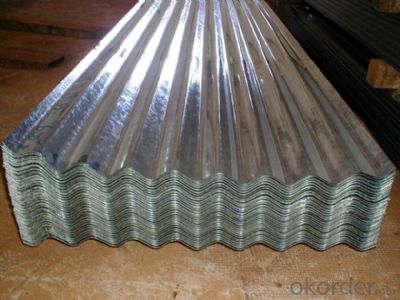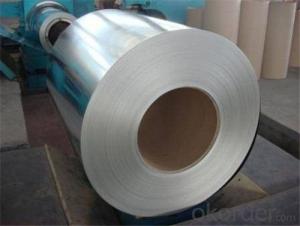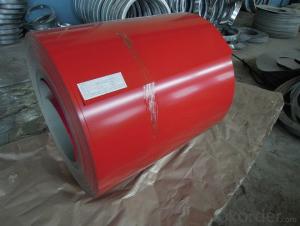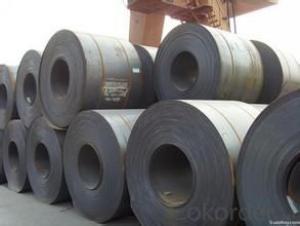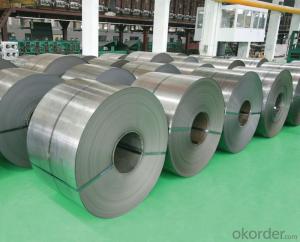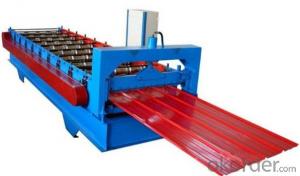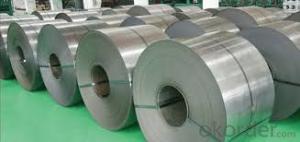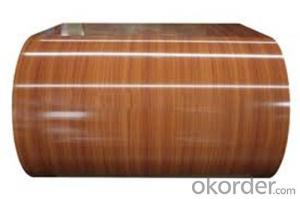Corrguted Galvanized Steel Sheet
- Loading Port:
- China Main Port
- Payment Terms:
- TT OR LC
- Min Order Qty:
- -
- Supply Capability:
- -
OKorder Service Pledge
OKorder Financial Service
You Might Also Like
Currugated Galvanized Steel Sheet
Our Specification:
Product name | Currugated Galvanized Steel Sheets |
thickness | 0.13mm-2.0mm |
width before corrugated | 600mm-1500mm 900mm,914mm,1000mm,1200mm,1250mm,1500mm |
zinc coating | 30g-225g |
standard | ASTM, AISI, DIN, GB |
material | SGCC,DC51D,DX51D,DX52D,SPCC,SGCD,Q195,SGHC |
surface structure | zero spangle, regular spangle or normal spangle |
surface treatment | Chromate treatment, Oiled/Dry, Skinpassed/Non-skinpassed |
packing | 1. standard seaworthy package : waterproof paper/iron sheet/steel strip/steel pallet 2. According to customers' requirements |
payment | T/T or L/C |
min order | 25 tons |
delivery time | within 35 days upon receipt original L/C or advance payment |
Our Application:
Construction | ceilings, verandas, rolling doors, warehouse, partitions, sheds, gutters, wall, underground piping, steel frames and cable trays. |
Electrical appliances | lighting fittings, water heaters, washing machines, refrigerators, stoves, microwave oven enclosures and switch boxes. |
Transportation | bus & truck body panels, fuel tanks, noise screens. |
Agricultural equipment | drying machines, animal houses, hoppers, irrigation systems, greenhouses, water tanks. |
- Q: How are steel coils inspected for coil set?
- Various methods and equipment are utilized to inspect steel coils for coil set. Coil set refers to the curvature or shape of the coil, which can affect its performance and usability in different applications. One way to inspect steel coils for coil set is through visual examination. Experienced operators or inspectors carefully assess the coils for any visible deformities or irregularities in their shape. This can be accomplished by unrolling a section of the coil and checking for signs of buckling, twisting, or unevenness. Visual inspection is a simple and cost-effective method to identify evident coil set issues. In addition to visual examination, more advanced techniques are employed to accurately measure and quantify coil set. One such technique involves using a straight edge or template. The straight edge is placed along the length or width of the unrolled portion of the coil, and any gaps or deviations from the straight edge indicate the presence of coil set. This method provides a more precise measurement of the extent and severity of the coil set. Another commonly used technique is the utilization of specialized tools like a non-contact laser measurement system. This system projects a line onto the surface of the coil using lasers and measures the distance between the line and the coil. Any variations in this distance indicate the presence of coil set. This method offers high accuracy and provides detailed data on the coil's shape and curvature. Other methods may involve the use of mechanical devices such as rollers or tensioners to unroll and measure the coil's shape. These devices exert controlled pressure on the coil to straighten it out, and any resistance or deviations encountered during the process serve as indications of coil set. Overall, the inspection of steel coils for coil set involves a combination of visual examination and precise measurement techniques. These methods aid in identifying and quantifying any deformities or irregularities in the coil's shape, enabling manufacturers and customers to make informed decisions about the usability and quality of the steel coils.
- Q: who are the 7 best steel guitar players ever?
- I would have to put Lloyd Green and Buddy Emmons at the top of the list for virtuoso instrument playing mastery, technical expertise and versatility, adapting steel guitar to most any kind of music they were in studio to lay tracks for. Certainly, Pete Drake, and Weldon Myrick belong at the top of the best of the Nashville Session steel players for the last 50 years or more. While Leon McAuliffe and Roy Wiggins in the 1930's and 40's pioneered and paved the way for the country music steel guitarists coming along in the 50's 60's; we cannot leave this list without crediting the virtuoso technical and musical versatility of much later steel guitarists, whom have been the top-drawer, first-call session players in Nashville studios for the last 30 years or so. Namely, the best of the Nashville Session Steel players: Paul Franklin Jr. That's how my votes would stack-up, of the 7 best steel guitar players, ever! Thank you for a fun question to muse over and answer! Sincerely, Jazz Me109 PS: When editing what I've written above, I found it amusing and quite interesting that Paul Franklin, Jr. wound-up at the bottom of my list, when indeed he should be at the top of the list! I guess I feel that way about all of the steel guitar masters, that I've listed here, though! Oh well!...Have a great day! :)
- Q: What are the common coil grades available for steel coils?
- There are several common coil grades available for steel coils, each with its own specific properties and applications. Some of the most commonly used coil grades include: 1. Hot Rolled Coils (HRC): This grade is produced by heating a slab of steel above its recrystallization temperature and then rolling it into a coil. HRC coils are known for their excellent weldability and formability, making them suitable for a wide range of applications such as construction, automotive manufacturing, and general engineering. 2. Cold Rolled Coils (CRC): These coils are produced by further processing hot rolled coils through cold reduction, which involves passing the steel through a series of rollers at room temperature. CRC coils have superior surface finish and dimensional accuracy, making them ideal for applications that require a smooth and uniform appearance, such as automotive body panels, appliances, and electrical equipment. 3. Galvanized Coils (GI): Galvanized steel coils are created by coating regular carbon steel coils with a layer of zinc through a hot-dip galvanizing process. This provides excellent corrosion resistance, making GI coils suitable for outdoor applications like roofing, fencing, and structural components. 4. Stainless Steel Coils: Stainless steel coils are manufactured from a variety of grades, with the most common being austenitic (such as 304 and 316) and ferritic (such as 430). Stainless steel coils offer excellent corrosion resistance, high temperature resistance, and aesthetic appeal, making them widely used in industries like food processing, chemical processing, and architecture. 5. Electro-galvanized Coils (EG): Electro-galvanized coils are similar to GI coils, but the zinc coating is applied using an electrolytic process instead of hot-dipping. EG coils have a thinner and smoother zinc layer, making them suitable for applications that require a brighter and more aesthetic appearance, such as automotive parts, appliances, and decorative items. These are just a few of the common coil grades available for steel coils. The selection of the appropriate grade depends on factors such as the intended application, required mechanical properties, and desired aesthetics. It is important to consult with steel suppliers or industry experts to determine the most suitable coil grade for a specific application.
- Q: Hello people.Me and the life mate have been working on a fantasy book together and we are currently in the process of outlining the cultures. The culture of our antagonists' is a sort of woodland tribal/celtic[ish] deal and they are very nature oriented. Being a detail freak and wanting to have some real world credibility in the story, I am trying to decide how they produce steel. I want steel to be an important part of the culture, but a thing that is in limited supply. I also do not want there to be a large amount of resources committeded to mining or processing iron ore for steel. So does anyone have any real world ideas explaining how the people can produce steel without using underground mining operations, large processing facilities, and without raping the land?All help and ideas are appreciated
- Well, steel is just modified iron, so you're going to have to start with acquiring the iron first. For that, you're most likely going to be using some sort of underground mining somewhere - either they do that themselves, or they purchase the iron elsewhere. Assuming you're not dealing with meteoric iron (which is possible, but pretty uncommon), or iron sands (not likely in a woodland area), then unless you're dealing with a rocky outcropping with iron veins out in the open, I'm pretty sure there needs to be somebody doing some digging. That said, it doesn't need to be a full raping of the land scenario. A couple of minor mines, some small-scale smelting operations, and somebody knowing the secret of making steel, and it could give you small amounts of steel without making an ecological disaster.
- Q: Im going to buy T-304 Stainless Steel exhaust tips for my truck. Is T-304 Stainless Steel good metal?
- Stainless steel is available in 2 grades - 304 and 316. The 304 has traces of ferrous to make it adaptable for the intended purpose. The 316 is non-ferrous and a bit more expensive. Whereas the 316 will not inhibit rust, the 304 will show some flecks (which can be cleaned away) over a period of time. It, however, is as good as the other.
- Q: How are steel coils used in the petrochemical industry?
- Steel coils are commonly used in the petrochemical industry for various purposes such as manufacturing storage tanks, pipes, and equipment used in the refining and processing of petroleum and petrochemicals. The coils are often formed into specific shapes and sizes to meet the requirements of different applications, ensuring durability, strength, and resistance to corrosion and high temperatures in the harsh environments found in petrochemical plants.
- Q: How are steel coils inspected for bendability using bend testers?
- Steel coils are inspected for bendability using bend testers, which are specialized machines designed to measure the flexibility and bend resistance of the coils. The process involves several steps to ensure accurate and reliable results. Firstly, the steel coil is prepared by securing it firmly in place, usually using clamps or other mechanisms to prevent movement during testing. This ensures that the coil remains stable and allows for consistent and repeatable measurements. Next, the bend tester is set up according to the specified testing parameters. These parameters typically include the desired bend angle, the speed at which the bend is applied, and the number of cycles to be performed. The bend tester is equipped with a bending mechanism that exerts a controlled force on the coil, simulating the bending conditions it may undergo during its application or use. Once the bend tester is set up, the bending process begins. The machine applies a gradually increasing force to the steel coil until it reaches the desired bend angle. This force is carefully measured and monitored throughout the process to ensure accuracy. During the bending process, the machine records and displays important data, such as the applied force, the angle of bend, and any indications of cracking or other defects. This data is crucial for evaluating the bendability of the steel coil and determining whether it meets the required standards. After the desired bend angle is reached, the coil is released from the bending mechanism, and any residual stresses are allowed to relax. This relaxation period is important to observe any potential spring-back effect, where the coil partially returns to its original shape after bending. The amount of spring-back is also measured and recorded for further analysis. Finally, the inspection results are analyzed to determine the overall bendability of the steel coil. If the coil meets the specified bendability criteria, it can be considered acceptable for its intended application. However, if any cracks, fractures, or excessive spring-back are detected, further investigation and analysis may be required to identify the cause and determine appropriate corrective actions. In conclusion, bend testers play a vital role in inspecting steel coils for bendability. Through a controlled and systematic process, these machines accurately measure the flexibility and resistance to bending, helping to ensure the quality and reliability of steel coils used in various industries.
- Q: i mean the properties include the elasticity, impact load and ductility. am doing assignment about the perfect material that should be possessed by spring and i found alloy steel is the perfect and am confused whether stainless steel is the same with alloy steel ?
- Alloy steel is a stainless steel. The differences between the two are the composition of the metal. Alloy steel is steel with usually less than 5% of other elements, like molybdenum, copper, chrome while stainless steel is a steel with at least 10-11% of chromium.
- Q: What industries use steel coils?
- Several industries use steel coils, including automotive, construction, energy, manufacturing, and transportation.
- Q: How are steel coils used in the production of shipping containers?
- Steel coils are used in the production of shipping containers as they provide the necessary strength and durability required to withstand the demands of transportation and storage. These coils are shaped and welded into the appropriate dimensions to form the walls, roof, and floor of the container. The high tensile strength of steel ensures that the container can withstand heavy loads, impacts, and harsh weather conditions, making it an ideal choice for shipping and protecting goods.
Send your message to us
Corrguted Galvanized Steel Sheet
- Loading Port:
- China Main Port
- Payment Terms:
- TT OR LC
- Min Order Qty:
- -
- Supply Capability:
- -
OKorder Service Pledge
OKorder Financial Service
Similar products
Hot products
Hot Searches
Related keywords
